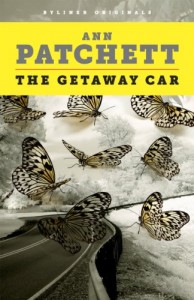 I’ve been reading a pile of Byliner and Atavist short content lately because I’m fairly obsessed with the format. At the recent BookNet Tech conference, Laura Hazard Owen had a great presentation about the many and varied opportunities that exist for people who want to do some testing in this area. Some of the things that I love about long-form journalism as ebooks: it’s an interesting intersection where magazine publishing and book publishing can work together for a common goal; they are amazing pieces of content that can be “downed” in a short subway ride (perfect for mom-type-tired-commuters like me); and the quality of the pieces highlights the fact that many, many longish non-fiction books could actually become these “shorts” and successfully work out their p&ls in ways that physical book sales can not support.
I’ve been reading a pile of Byliner and Atavist short content lately because I’m fairly obsessed with the format. At the recent BookNet Tech conference, Laura Hazard Owen had a great presentation about the many and varied opportunities that exist for people who want to do some testing in this area. Some of the things that I love about long-form journalism as ebooks: it’s an interesting intersection where magazine publishing and book publishing can work together for a common goal; they are amazing pieces of content that can be “downed” in a short subway ride (perfect for mom-type-tired-commuters like me); and the quality of the pieces highlights the fact that many, many longish non-fiction books could actually become these “shorts” and successfully work out their p&ls in ways that physical book sales can not support.
Of the Byliner originals that I’ve really enjoyed lately, obviously Buzz Bissinger’s After Friday Night Lights, where a third of the profits from the sale of the book go to Boobie, who has had some hard times post-FNL’s publication, film and TV run (and holy moly the craziness that came up around this between Apple & Amazon!). I found Ann Patchett’s The Getaway Car utterly compelling for two reasons: she’s such a genuinely good writer and her advice about her craft is simple, yet motivating. Because Jon Krakauer can do no wrong in my eyes, I thought his powerful rage-against-the-machine that is Greg Mortensen justified never having read that book in the first place. In addition to these ones that I’ve read, I’ve started a half-dozen others, including a great narrative nonfiction piece from The Atavist called Mother Stranger that I downloaded while at the Booknet conference as the speaker, Stephanie Syman, was giving her presentation.
So much of what I appreciate about the format, style, and length of this content comes from being a magazine reader/lover. One of my life’s goals that I have failed miserably at is becoming a magazine writer — let’s be fair, I’ve never really given it any kind of hard shot, because, mainly, I’m terrified of pitching and being rejected, and that my style of rambling, sometimes incoherent sentences might not make for the best kind of reading. Annnywaaay, with the current state of the marketplace, the complaints about pricing, about the agency model, about the royalty rates, none of which I’m going to get into here (and I did try last week to address some issues, but I’m sorry that I had to remove that post; I’m going to try to put a less contentious version up over the next couple weeks), long-form journalism as ebook is bright, shiny star in terms of content companies finding ways to connect with readers.
Why Byliner and Atavist are succeeding and, really, dominating this marketplace at the moment seems simple to me — they have great branding, which is something that escapes traditional publishing simply because of the nature of the business; they are attracting “name” authors who are also extending the life of their most successful content in new and innovative ways; and there’s active merchandising through the vendors. Without support of a program like Kindle Singles, would this content ever surface? I would imagine that some of the bigger names, the Atwood, the Krakauers, the timely news-worthy features like the short book on Joe Paterno, search will drive visibility as much as merchandising, as well as publicity around these topics.
How important is branding and visibility in terms of short content? Beyond any other kind of traditional publishing, it presents the biggest opportunity for publishers, authors, trying to monetize their “sawdust.” With any trade publishing program, and I’m speaking here of the big publishing houses, this is my experience, the ins and outs of what gets published doesn’t normally fit into a brand — there’s a sensibility, there’s a personality in terms of editorial direction, there’s even a general knowledge of what doesn’t fit into the program, but it’s very clear that it’s not like Pepsi, or Coke, or Nike, etc. Yes, Penguin has the Penguin, but other than it’s classics program, is that brand recognized for it’s current program to a general consumer? The bright yellow Byliner banner, the amazing photography, the clear, direct titles — these are the signs of a publisher who understands not only the importance of branding but how said branding looks in a digital marketplace. These covers are designed for virtual stores; they look great on a virtual bookshelf, and even though the content moves from fiction to nonfiction, from recognizable names to timely, newsworthy articles, it’s always apparent that they are Byliner Originals.
I could go on, and maybe I will. But for now. I’m wondering what makes someone buy a Byliner original or a Kindle single — driven by the content, the author, the price point?